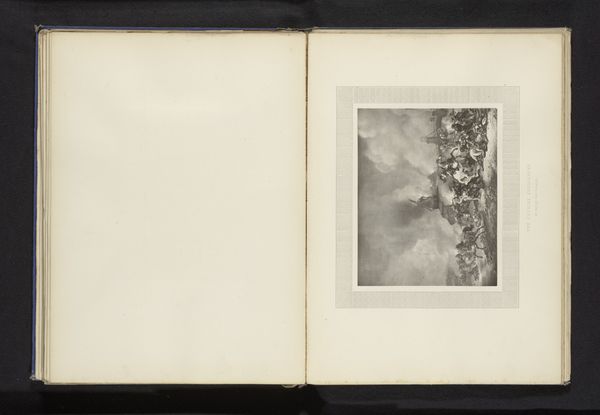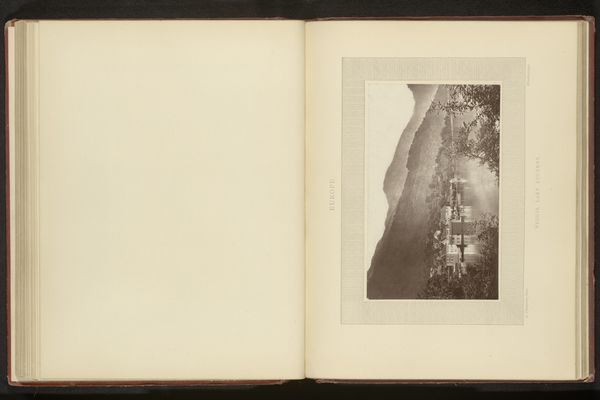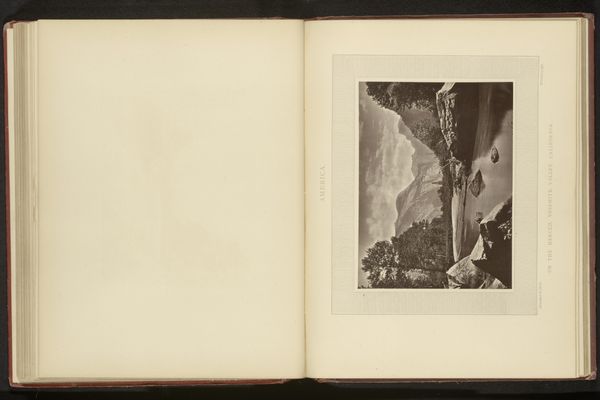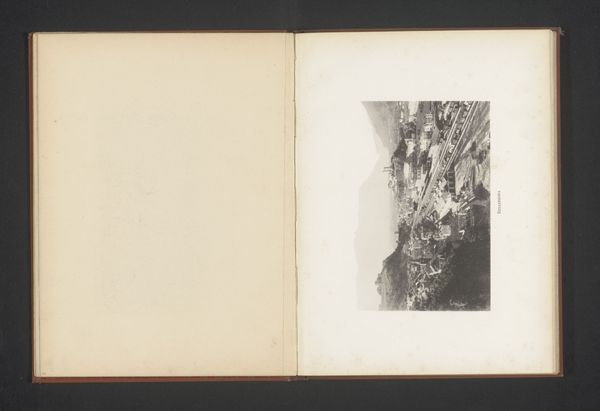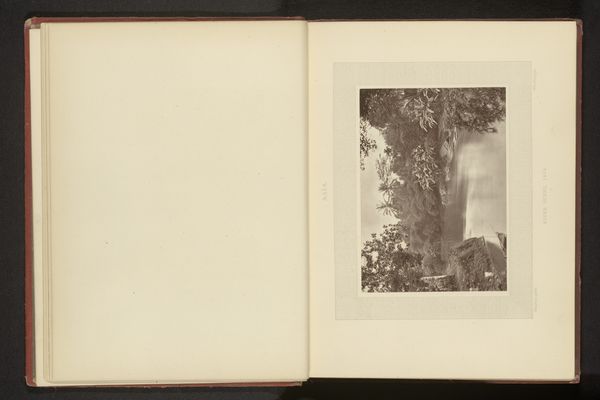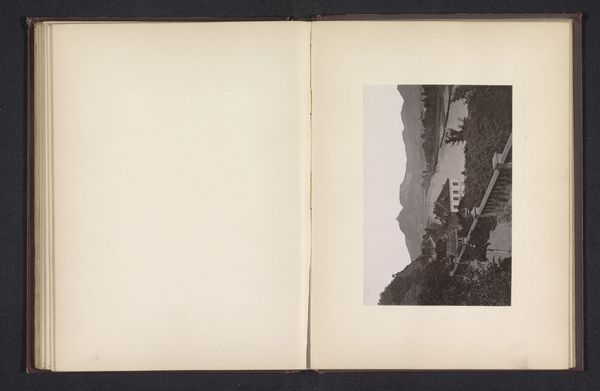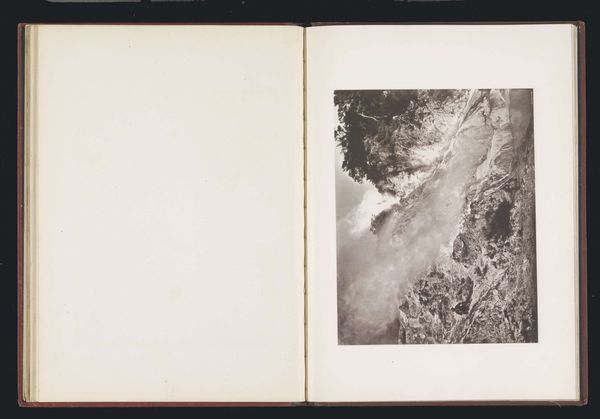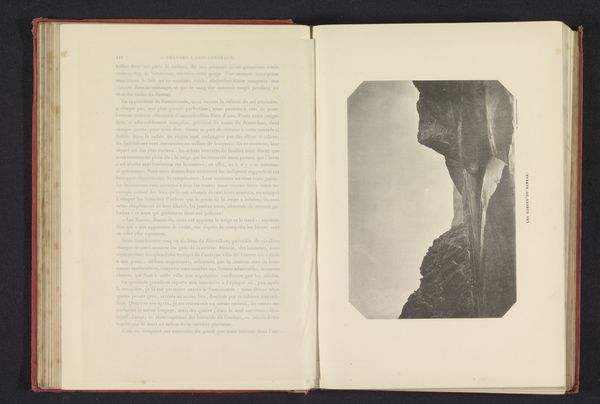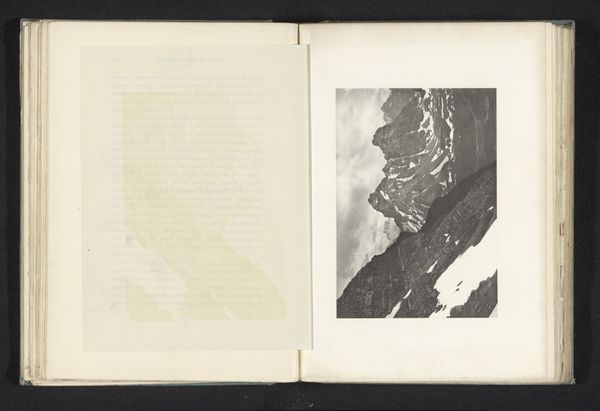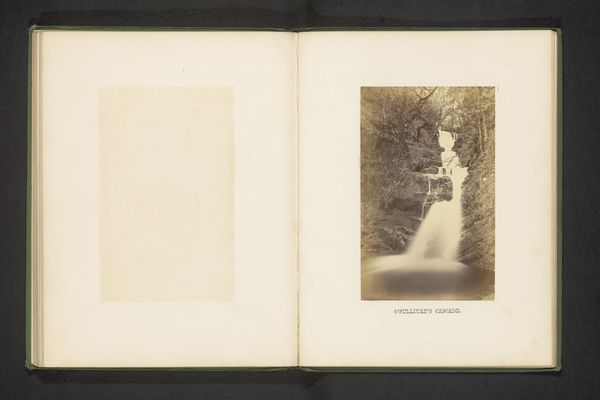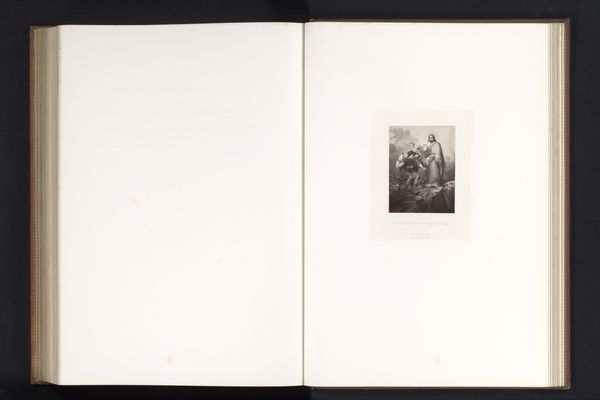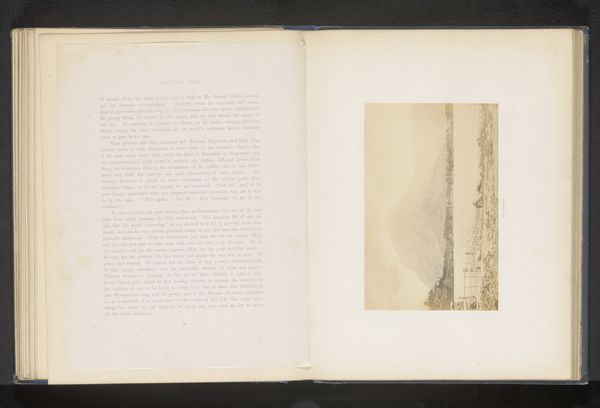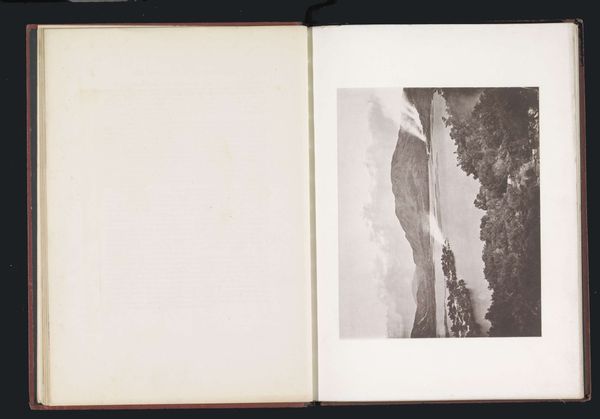
Dimensions: height 100 mm, width 163 mm
Copyright: Rijks Museum: Open Domain
Curator: Before us, we have an albumen print from before 1875 titled “Gezicht op de Mer de Glace te Zwitserland,” presenting a view of the Mer de Glace glacier in Switzerland. Editor: The image is breathtaking, and simultaneously a bit unsettling. The sheer scale of the landscape is quite imposing and the photographic medium used only heightens that sense of immense grandeur. Curator: Precisely. The albumen process itself, which was quite popular in the mid-19th century, involves coating paper with egg white to create a glossy surface for the photographic emulsion. This method resulted in exceptionally detailed prints, capturing the textures of the ice and rock formations with astonishing clarity. I think the material reality is also very much involved with this landscape—there would have been extensive time in preparing the printing material to create this piece. Editor: The choice of photography at this moment is also interesting. This wasn't just about documentation; these kinds of images shaped how the world understood the sublime, both conceptually and politically, within the frameworks of expanding nation-states and tourism. Think about how images of the American West contributed to Manifest Destiny! Curator: Absolutely, and consider how this photograph would have been perceived by the growing middle class. It’s a depiction of an almost unattainable, sublime landscape, made accessible through the relatively new technology of photography and the growth of consumer culture. Editor: It also speaks to how landscape photography served scientific and colonial endeavors during this period, recording territories and asserting claims. The making of this photograph then becomes not just a landscape, but an important artefact of historical vision. Curator: I hadn't considered it that way. I was mostly drawn in by the romantic nature and almost realism through this photo. I can see the power and manipulation in how one would have interpreted it! Thank you for showing that lens to me. Editor: Well, I, in turn, appreciate your observations of material and craft and production—they are certainly crucial when considering photographic technologies and landscape art.
Comments
No comments
Be the first to comment and join the conversation on the ultimate creative platform.
